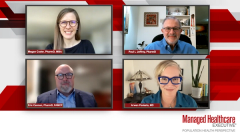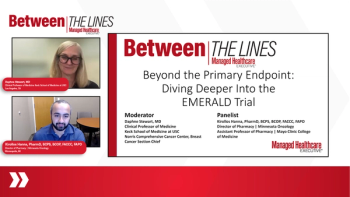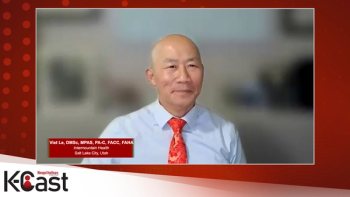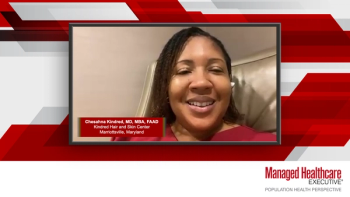
Trajectory of PDT Utilization in Health Care
In closing thoughts, the panel discusses the future of prescription digital therapeutics within clinical practice.
Episodes in this series

Megan Coder, Pharm.D., M.B.A.: In wrapping up, we’ve talked about so many different topics today. We’ve talked about what the former ecosystem is, what the current ecosystem is, and what the hopeful future will look like. I’d love to hear a summary of your thoughts in terms of where we are heading. What would you like to see happen? What do you think needs to happen to ensure that patients have access to these incredibly critical therapies? Anyone interested in going first, we’ll let you start.
Paul L Jeffrey, Pharm.D.: I’ll give it a go. I think the reliance on the federal government to provide a pathway for these products to be evaluated and adopted is a very important step. However, as Eric said, to a certain degree that provides one basis of evidence, but payers and clinicians are still going to go through hopefully a rigorous process to evaluate that evidence to feel comfortable to use these products with their patients. I think that as I mentioned earlier, my organization and I are for these products and want to see the governmental barriers come down so that we will see more and more of these products become available. One thing I’ll mention is that these products are not relatively expensive. I say that because we see so many drugs coming to market with an average annual cost of hundreds of thousands of dollars per year. The economic risk to the payer and the health plan is relatively low compared to some other drugs. That said, payers would still want to have some assurance that they’re working.
I can reveal that we entered into an outcomes-based agreement with Pear Therapeutics when we adopted the reSET and reSET-O products, which allows us then, under the contractual agreement, to determine the performance of the product relative to the contract, but also the performance of the product relative to our patient population. My organization was also affiliated with UMass [University of Massachusetts] Medical School so we have an academic imperative to disseminate information so we can generate and have in my plan for many years, real-world evidence that we then disseminate. What I see coming is further acknowledgment and recognition of the utility of these products, a pathway that begins to open up because governmental agencies and payers also acknowledge that and provide a way for clinicians to adopt it and for their patients to have access to it, which is covered by the third party insurance. I do see that as our relatively near-term future.
Arwen Podesta, M.D.: I’ll jump in. We are in an era of digital technology. Digital health technology exists, and from a prescriber perspective, from a provider perspective, we need to jump in and use it wisely, and use the ones that work, and adopt them and advocate for them, because then we’re advocating for our patients. Our patients are on the phone for hours a day, scrolling, whatever that may be. Let’s use those tools that they’re using in a health-forward way that we know is going to improve adherence, retention, and outcomes.
Eric Cannon, Pharm.D., FAMCP: I’ll jump in and conclude and say, this is an exciting time. This is an amazing time for us to be looking at technology and the opportunity for technology. My daughter, the other night, I was giving her a hard time about some app [application] on her phone, and she said, “Dad, get over it. It’s here to stay.” I think that’s the reality of what we’re doing today. If you look at the total cost of care, there’s going to be an impact. Intuitively, if I keep patients from attempting suicide or succeeding with suicide, those costs are substantial. And every time I keep a patient out of the emergency [department], every time I facilitate connection of a patient with a provider, there is going to be some cost benefit. The evidence has to come out, and I think the more real-world evidence we get will drive adoption, will drive acceptance. That’s what we need. The more we drive that acceptance, the easier it is to drive coverage. I’m excited to see where everything goes.
Megan Coder, Pharm.D., M.B.A.: I want to sincerely thank each of you. It’s been incredible talking with you today. And to our viewing audience, we hope that you found this Managed Healthcare Executive®Population Health Perspectives®to be both rich and informative. Thank you, and I look forward to our next discussion.
Transcript edited for clarity.
Newsletter
Get the latest industry news, event updates, and more from Managed healthcare Executive.


















































